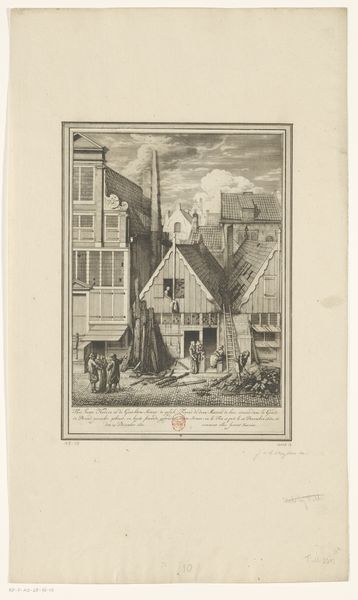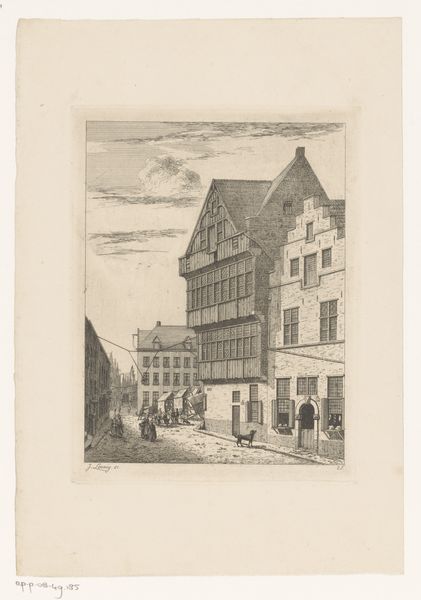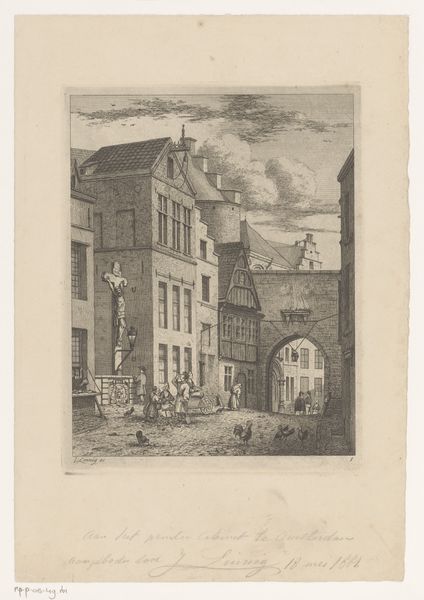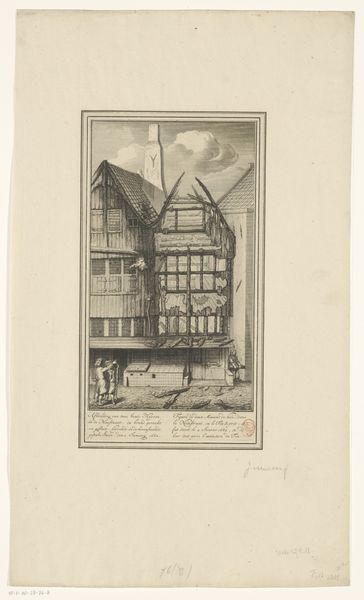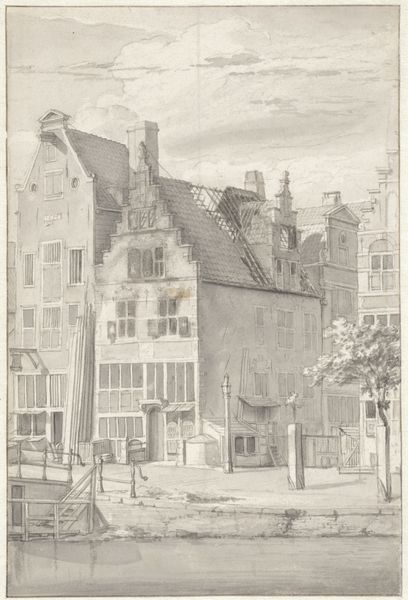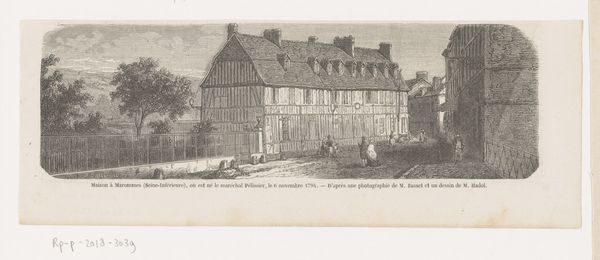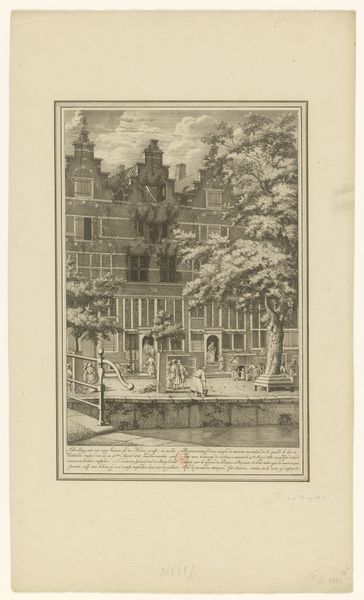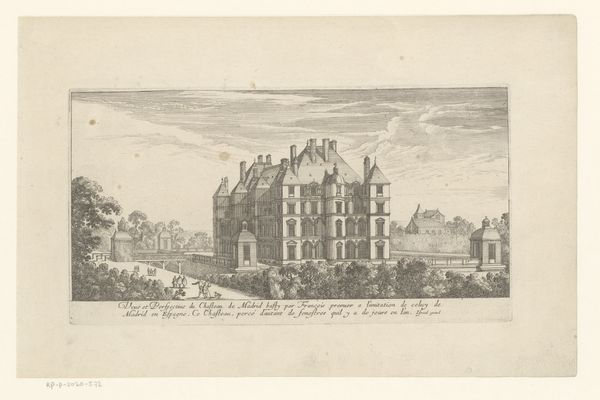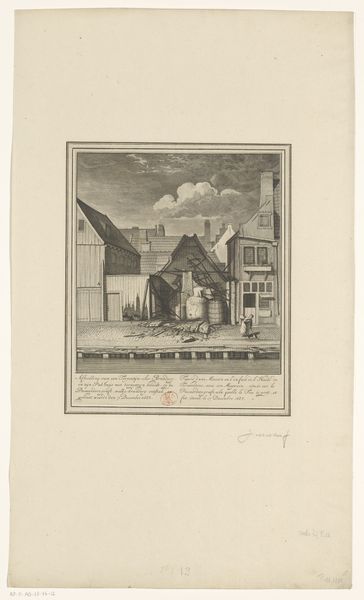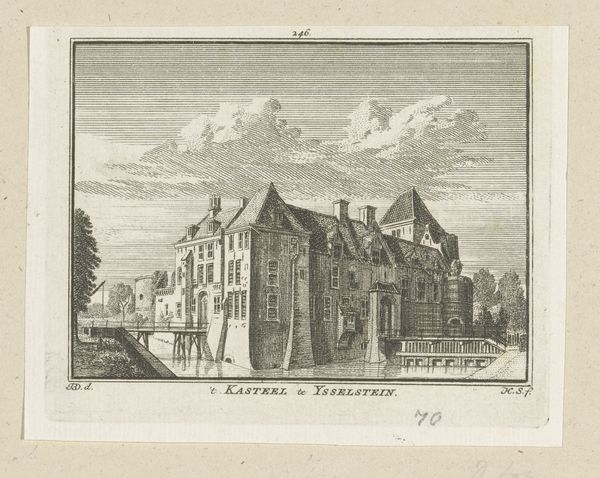
#
aged paper
#
toned paper
#
homemade paper
#
photo restoration
#
ink paper printed
#
parchment
#
old engraving style
#
retro 'vintage design
#
personal sketchbook
#
old-timey
Dimensions: height 356 mm, width 212 mm
Copyright: Rijks Museum: Open Domain
Jan van der Heyden created this print of a burned house in Bloedstraat in 1684. The printmaking process itself— likely etching or engraving—allowed van der Heyden to meticulously render the textures of the fire-damaged building. Look closely, and you’ll see the way the fire has distressed the facade, revealing the vulnerability of wood and brick. The very act of engraving, with its precise lines and tonal gradations, mirrors the careful observation required to document such a scene of urban destruction. It is a scene of disaster but also of labor; you can see figures gathered around a hand-operated pump, working to extinguish the blaze. The print transforms the real labor of firefighting into an aesthetic object for contemplation. This kind of image served a social purpose: to record, to inform, and perhaps to prompt action. By focusing on the materiality of both the building and the print itself, we can appreciate how van der Heyden elevated a scene of everyday life into a lasting work of art.
Comments
No comments
Be the first to comment and join the conversation on the ultimate creative platform.

